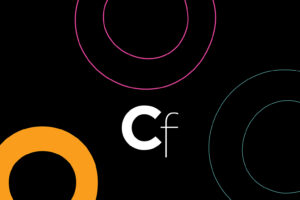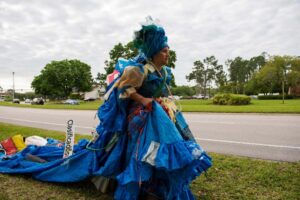Indigenous Humor and Resistance Shines at The Photography Show


What struck me first about this year’s Photography Show, running through April 27 at the Park Avenue Armory, was the near-total absence of traditional photojournalism. Without the deluge of protest imagery or the urgency of crisis photography I’ve grown accustomed to while doom-scrolling social media, I worried the fair might be edgeless; rehashing the archive and bygone struggles rather than the present moment. However, as I made my way across the maze of 64 international exhibitors hosted by the Association of International Photography Art Dealers (AIPAD), what most stood out to me was the prevalence of contemporary Indigenous artists channeling political urgency into personal explorations, embracing sincere introspection alongside an unexpectedly fresh (and often gallows) sense of humor.
This year’s fair traverses a broad landscape of familiar ground — celebrity portraits, historical icons, behemoths of the photographic field — but most rewards visitors who take the time to engage with the ancillary programming and presenters. In the back, the Photobooks + Partners section offers a welcome counterpart to the buzz of the booths: tactile and unexpectedly revealing, it adds depth to artists visitors might breeze past on the main floor. As AIPAD Executive Director Lydia Melamed Johnson told me, “One of the things we’re seeing a lot of is those inside the underrepresented communities turning the camera on themselves and their own communities.” That spirit carries through the AIPAD Talks series, which, rather than defaulting to tokenism, makes real space for contemporary photographers from different demographics to speak on their own work.


At the booth of Toronto’s Stephen Bulger Gallery, a focused solo survey traces over four decades of work by multimedia artist Shelley Niro (Bay of Quinte Mohawk, Turtle Clan), whose practice is deeply rooted in her Kanien’kehá:ka (Mohawk) heritage. Niro’s work shifts fluidly between sharp cultural critique and intimate reflection, often laced with irreverence.
“I think just making art as an Indigenous woman is political,” Niro told me at the fair. “It doesn’t matter what you do [or] what you put out there. I could be making paintings of wooden spoons and people would see it as political.”
Three large photo collages from her Portraits series (1991-present) offer a rare glimpse into the everyday experiences of Indigenous people. Initiated amid the turbulence of the Kanesatake Resistance, or Oka Crisis — a 78-day standoff between the Canadian government and Mohawk land defenders over sacred, disputed territory — the works reflect Niro’s personal response to public unrest. While media coverage at the time focused on conflict, her first piece from the series, “Untitled” (1991), captures what she described to me as “a celebration of life.” The collage documents a powwow scene, with her two sisters smiling defiantly. Arranged like a page from a family scrapbook, the work underscores community, resilience, and joy in the face of hostility.
Kitty-corner from this booth, more of Niro’s works are being shown by Andrew Smith Gallery in Tucson alongside the work of another clever cultural commentator, Zig Jackson (Mandan-Hidatsa-Arikara), who mixes performative portraiture and documentary photography to challenge stereotypes of Indigenous people and their erasure from modern society.
“His work is about making you aware that the Indigenous population is everywhere,” said gallerist Andrew Smith. “In urban areas, you may not notice them, but they are there.”

Rights Society (ARS), New York)
Born into a military family on a North Dakota reservation, Jackson sincerely honors Indigenous veterans and their families in his ongoing Tribal Veterans series (c. 1994–present), reframing the warrior not as a relic of the past but as a symbol of contemporary Indigenous identity and patriotism.
In a more satirical vein, Jackson’s 1991–92 series Indian Photographing Tourist Photographing Indian turns the camera — literally and conceptually — on the colonial gaze, parodying the objectification of Indigenous people by treating tourists’ voyeurism as spectacle. One photo on display at the fair, depicting crouching white tourists thrusting their cameras into the faces of Indigenous individuals in ceremonial dress, is audacious — I actually laughed out loud with second-hand embarrassment — yet the series never feels mean-spirited or damning. Anyone who has watched a street photographer chase a wannabe influencer in SoHo recognizes the inherent voyeurism of the photographic medium, and Jackson’s exploration feels too meta to be read as a (literally) black-and-white condemnation of the pastime.

In the back corner of the booth of Santa Fe’s Obscura Gallery, Douglas Miles (Apache-Akimel O’odham) displays intimate-scaled, black-and-white digital collages that embrace irony and meme culture. Juxtapositions of pixelated found images scoured from the internet are overlaid with imagery of contemporary Apache skateboarders and community members. In a photo from the Res Skate Demo series (2024), a baseball-capped skateboarder kickflips over a crowd of 19th-century Apache individuals seated beside a train, while gun-toting soldiers look on. The crafted scene feels as though the soldiers are casually leaning on the fence near the skaters at Tompkins Square Park over breakfast sandwiches, rather than overseeing the likely forced transportation of people. Is this comparison dark? Yes. Is it also weirdly funny? Yes.


At the booth of Scheinbaum Russek Gallery in Santa Fe, Cara Romero (Chemehuevi) showcases vibrant, theatrical digital portraiture, blending Indigenous futurism and humor. Romero’s “The Zenith” (2022) surrounds Mvskoke Creek artist George Alexander with floating white corn in the starry cosmos, offering a deceptively lighthearted meditation on the fragile future of heritage foodways. Unintentionally echoing the recent Blue Origin rocket launch by Amazon CEO (and Whole Foods mogul) Jeff Bezos, Romero’s piece reimagines the future not as an unclaimed playground for tech billionaires, but as a space where ancestral knowledge and sustainability can thrive.

While Niro, Jackson, Miles and Romero anchor some of the fair’s most sly showcases, a wide range of Indigenous photographers advance powerful, self-determined narratives with more sincerity. Monroe Gallery of Photography, also based in Santa Fe, is showing striking works from Diné photographer Eugene Tapahe’s Art Heals: The Jingle Dress Project (2020-present), which intertwines ritual and protest to foster collective healing. At the booth of New York’s own Bruce Silverstein Gallery, Dakota Mace (Diné) and Sarah Sense (Choctaw-Chitimacha) turn to oral histories and archival research, respectively, to interrogate how individual memory shapes shared culture.
Together, these artists are redefining the boundaries of the photographic canon, positioning Indigenous experience not as subject, but as a vital critical lens. Amid the fair’s constant motion, these works manage to anchor you — sometimes with humor, sometimes with tenderness, often with both.







